
![]()

Part 1: Summer jobs
Part 2: Sketches of park and ride design


Best summer jobs ever: 1967-1970
Our family visited Disneyland in 1956, the second year it was open. The television show, Disneyland, had been on the air for several months and we had watched it regularly. Walt covered the new park, showed renderings of the lands and the rides, and interspersed that with tales of Davy Crockett, Spin & Marty, and other adventures. By the time my parents planned our big trip out west, we were primed and pumped to experience this brand new concept of a family theme park. I loved it even though I was just 6 years old. In 1961, Angus Wynne opened Six Flags over Texas as a copy of Disneyland for Texans. Originally, it was to be called Texas Under Six Flags, but Mr. Wynne declared, 'Texas ain't under nothing!' so the name was modified slightly. I went numerous times over the years and spent 4 summers working as a host in the park. It was one of the most fun jobs I have ever had. I felt a bit of guilt for getting paid for having a blast all summer long.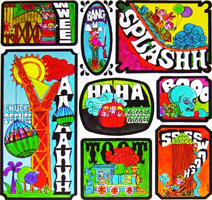
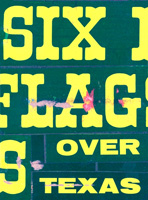

Promotions from that first year. Cover of a photo album - made of sections of bumper stickers. An article I wrote on the history of the park for the employee newsletter.
Department assignments
1967: Parking lot: bumper stickers, traffic control, tram driver, spiel announcer
1968: Sky Hook; carpooled to work
1969: Tower observation deck and superslide: worked doubles, won a scholarship
1970: Rover in Operations, a variety of rides
Hourly wage: $.90, then up to $1.25
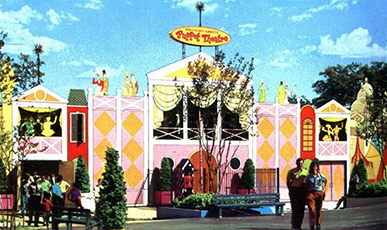
Friends from Six Flags summers
• Carpool: Laird McDonald, Barbara Smith, Nancy Ayres, John Bookhout
• Employees: Hollis Drake, Robert Cowsert, Charlie Wheeler, Karen Jessup, David Watson, Ray Bragg, Tommy Wolfe, Richard Stoddard, Susan Bottorff, David Slater, Kerry Howell, Dudley Hodgkins, Mike Glennan, Larry Wine, Rodney Elkins, Marge Johnson
• Supervisors: Doug Ragsdale, Margie Robinson, Leslie York, Ernie tall guy, Frank blonde guy
Parking lot, summer 1967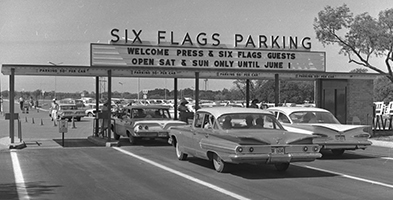

There was no Oil Derrick Tower in 1967, but the parking shuttle trams were the same.

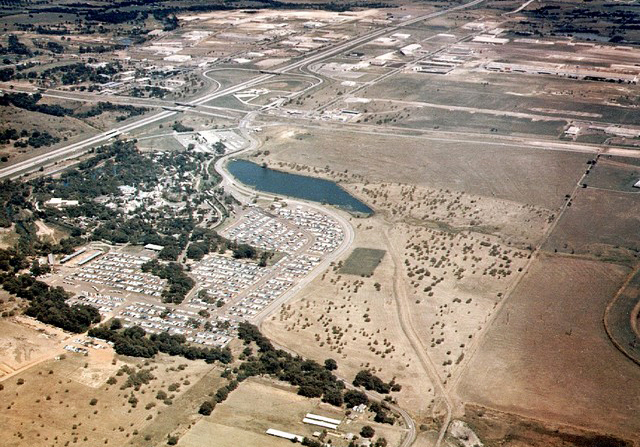
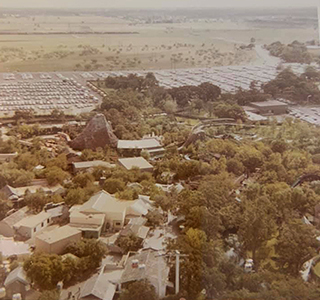
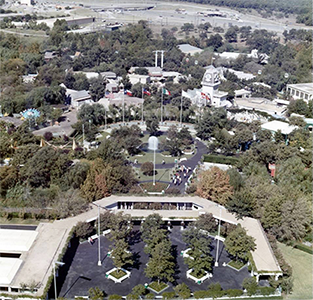
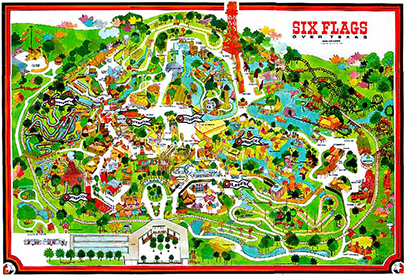
Below: 1968, employee parking in middle right. Personnel office above new puppet theater.

The Sky Hook, summer 1968

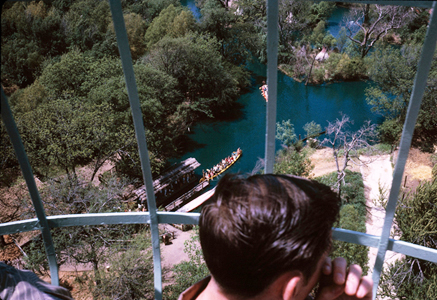
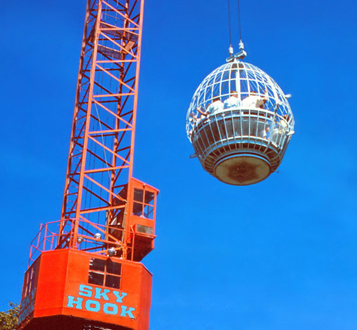
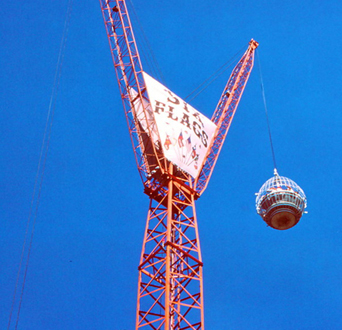
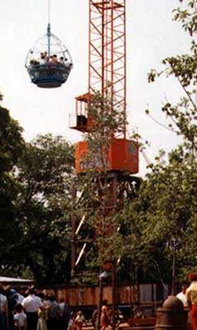



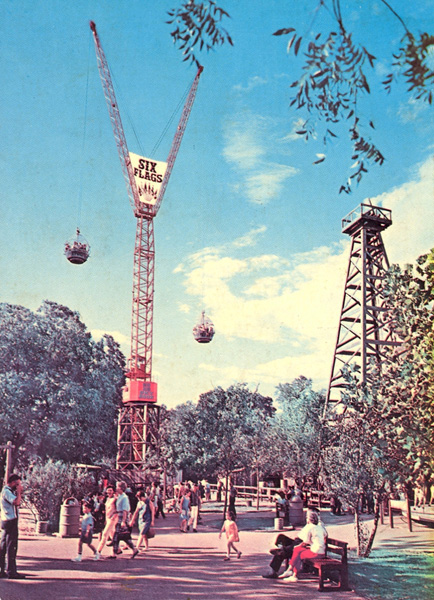
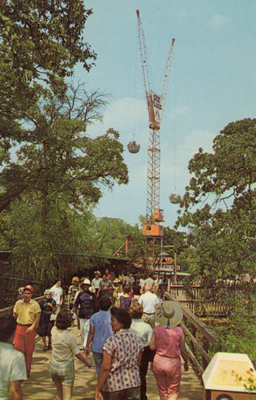


Karen Sullivan, Ed Bandy; Karen Stevens, Shirley White, Larry Wine
The Mini Mine Train
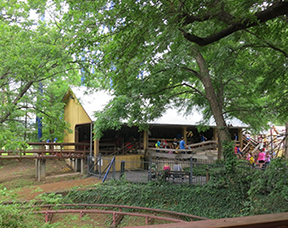
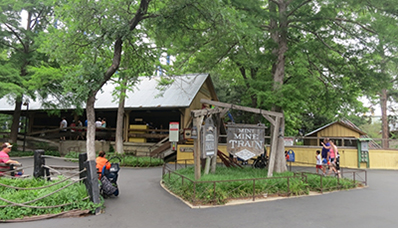
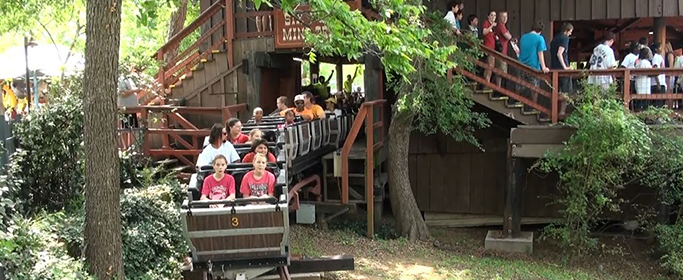
The
Astrolift
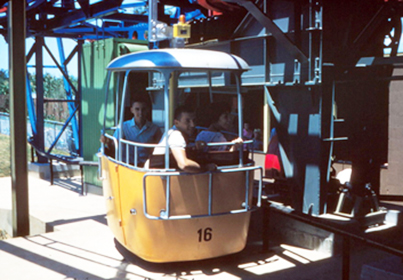


The Tower, summer of 1969

The Compound: Operations office, locker rooms, canteen, time cards


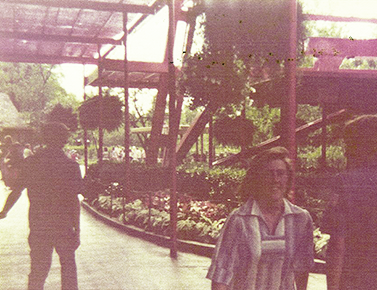
Rick on the Spindletop
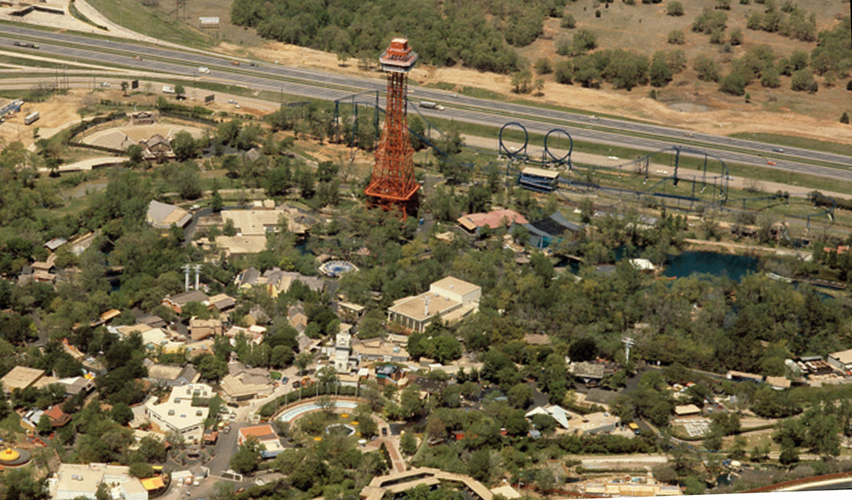
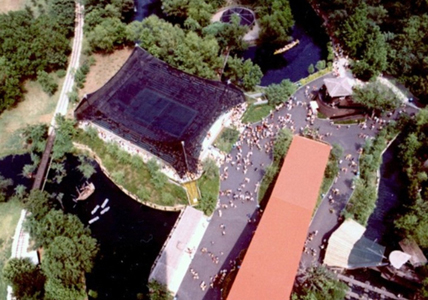
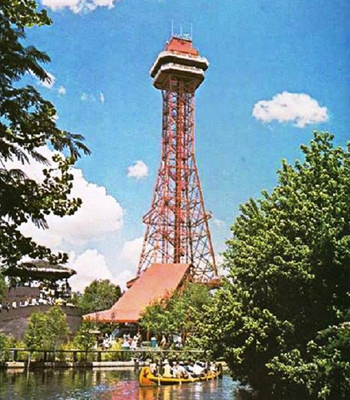
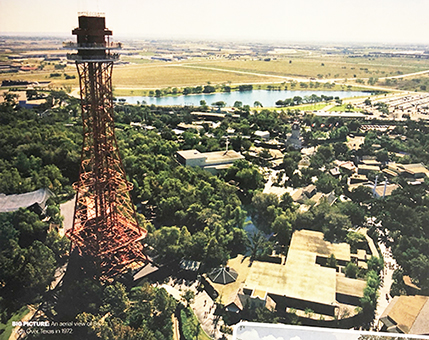
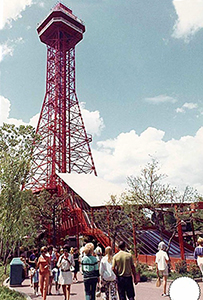

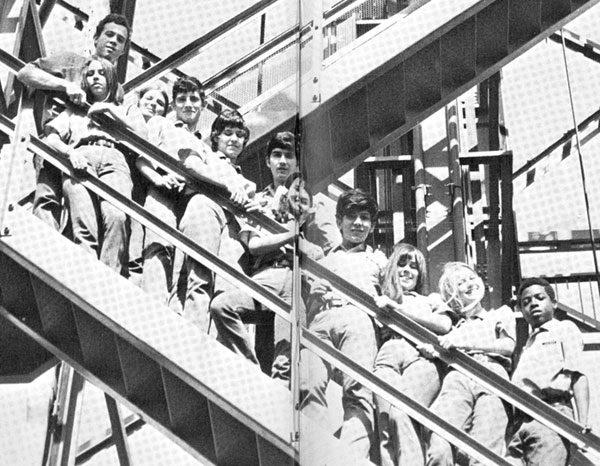
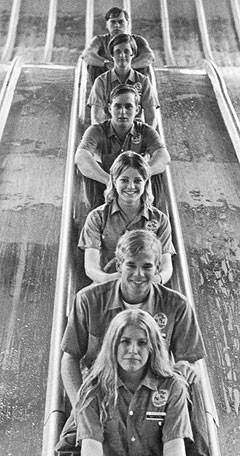
Left to right: Steve Turner, Jill Smith, Amy Fultz, Charles Mezzell, Marge Johnson, Mike Glennan, Leslie Whitely, Chuck Alcedo, Karen Sullivan, Beverly Dodd, James Waldon.
Top to bottom: Carlton Barker, Gloria Berryhill, Larry Wine, Karen Stephens, Larry Cox, Mary Wiggs.


Above left: Rodney Elkins. Right: Karen Stephens, Shirley White, and Lane Gallagher (dad: Wayne Gallegher)

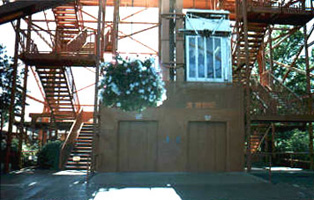

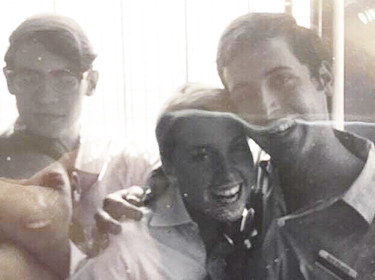
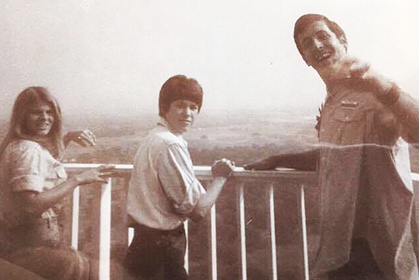

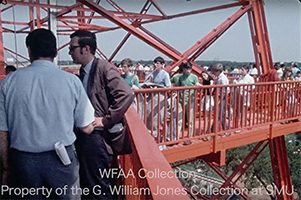
Below: ?, Marge Johnson, Jim Watson, Marsha Duckworth, David Berryhill, Larry WIne, ?.
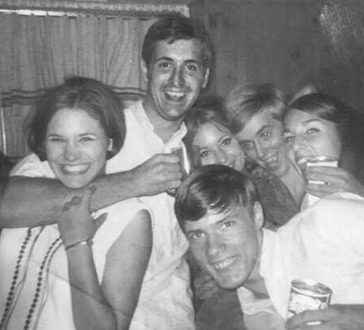
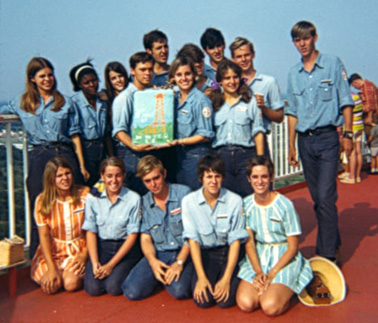

YouTube video of the Tower Slide

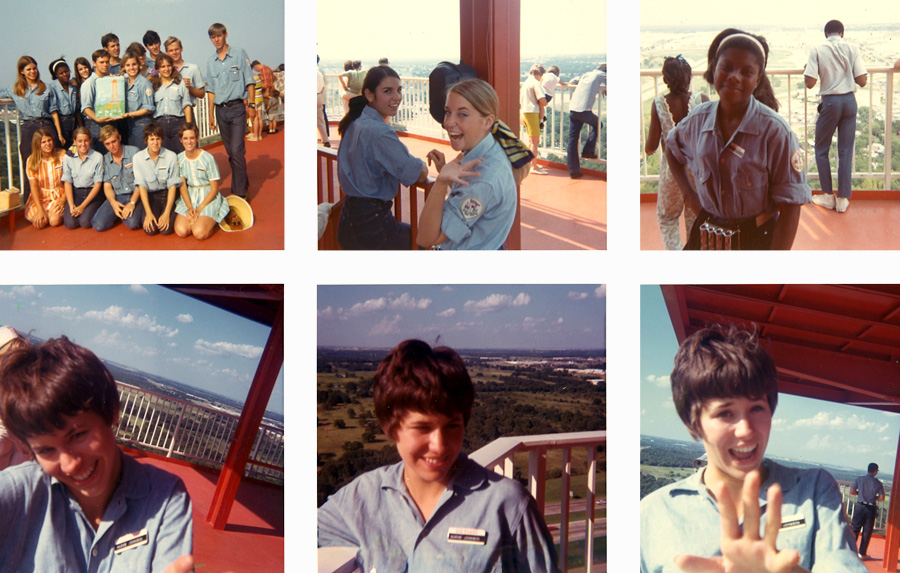
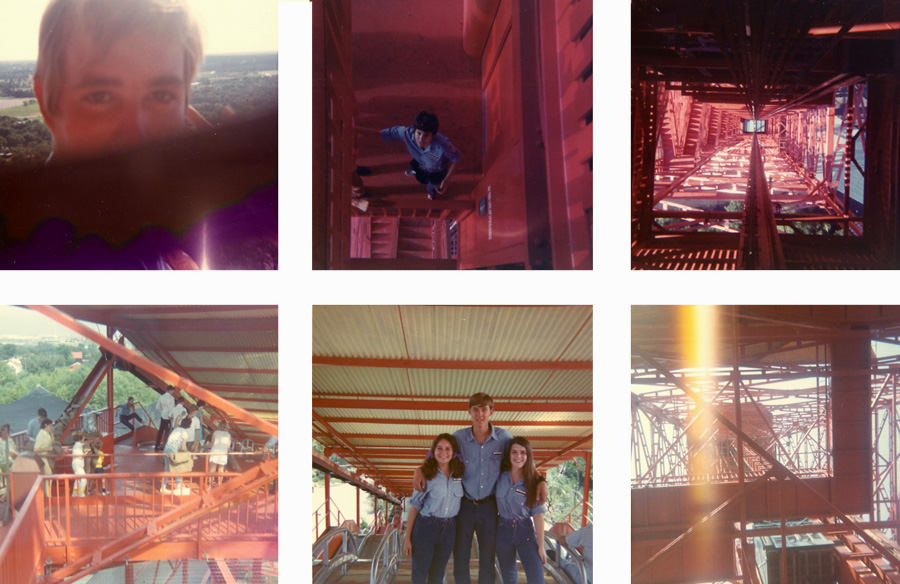


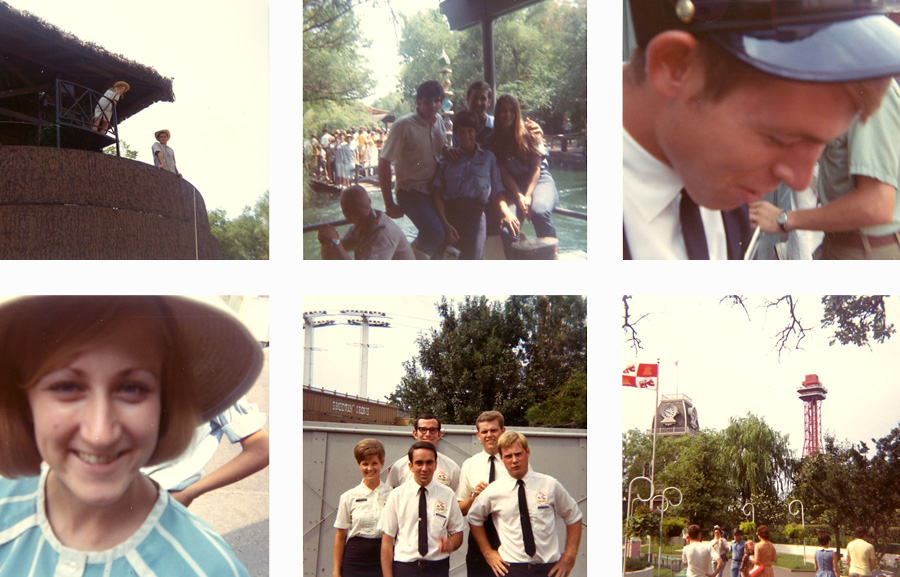




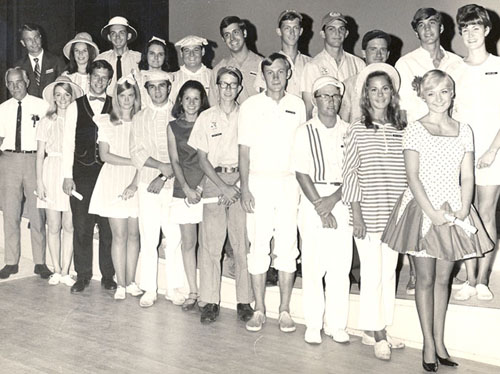

The winners of a Six Flags college scholarship, summer 1969 season. I am in the middle of the back row. These were given out during a ceremony in the Southern Palace theater, after the park closed for the night. It was quite an honor and an award and an evening I still cherish.



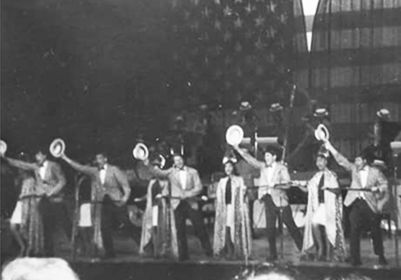
The Southern Palace was formerly an amphitheater. For the 1968 season it was enclosed and remodeled as a large indoor theater with elaborate stage productions. Its first season showcased two shows: the day show was TV-BC, a comedic spoof on the ancient Roman-era; the evening show was a patriotic show - the Red, White & Blue Revue. I worked a lot of doubles that summer and would often slip into the back of the theater and watch those shows during breaks, between shifts, and after work. They became major parts of that eventful summer at Six Flags. I tracked down the cast album of the revue on Amazon and had it converted to mp3 to load onto my iPod players. Listening to it brings back so many memories of what may have been the best summer of my life.
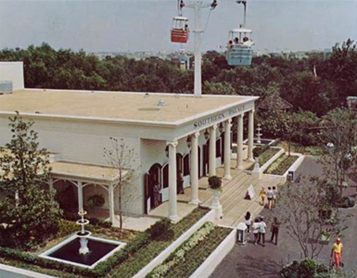

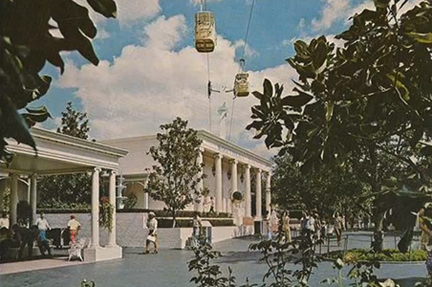
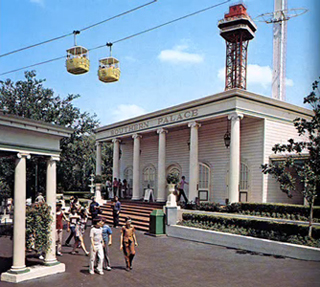
Vintage postcards from the 1960s
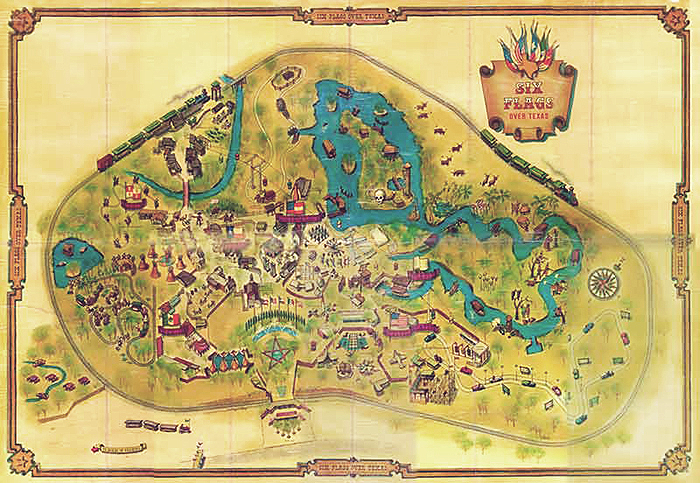
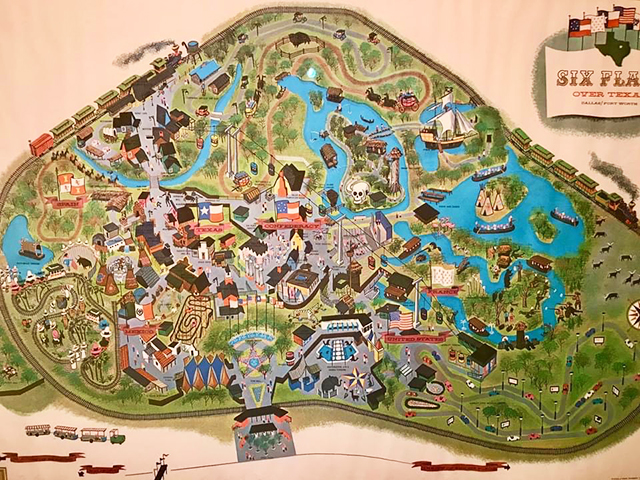
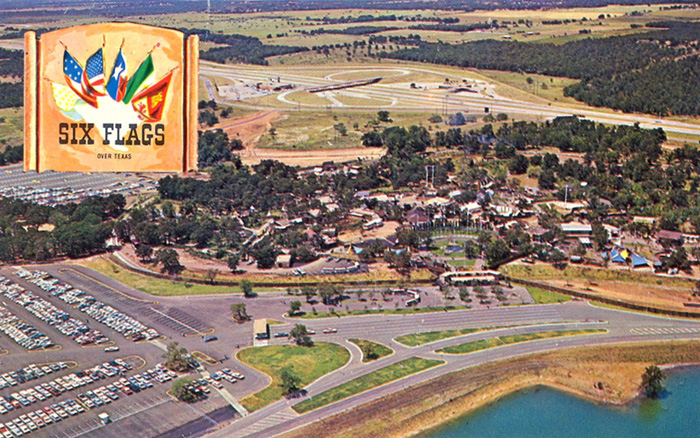
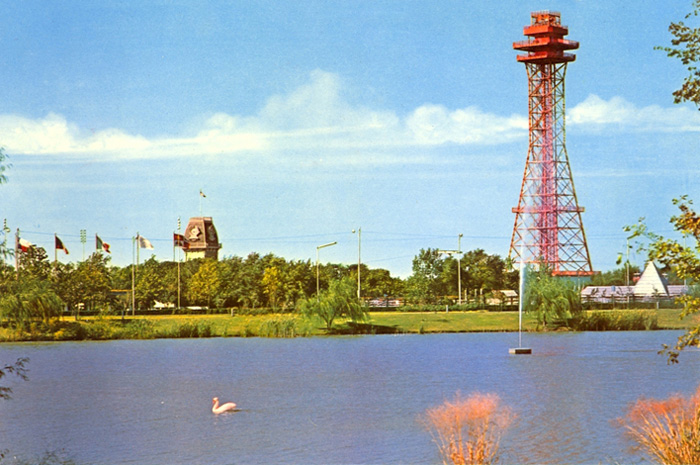
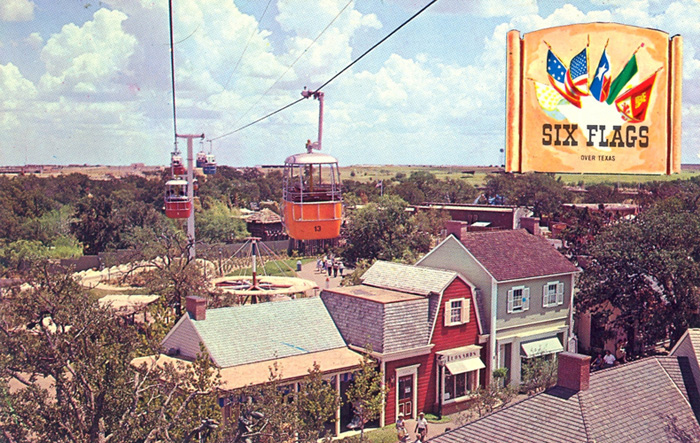
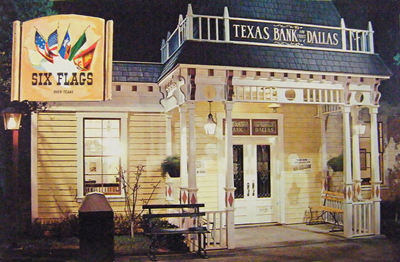

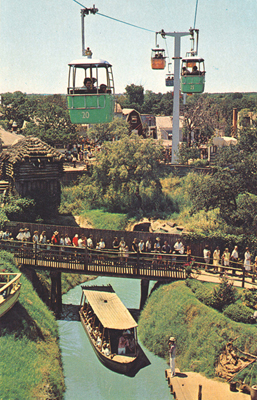
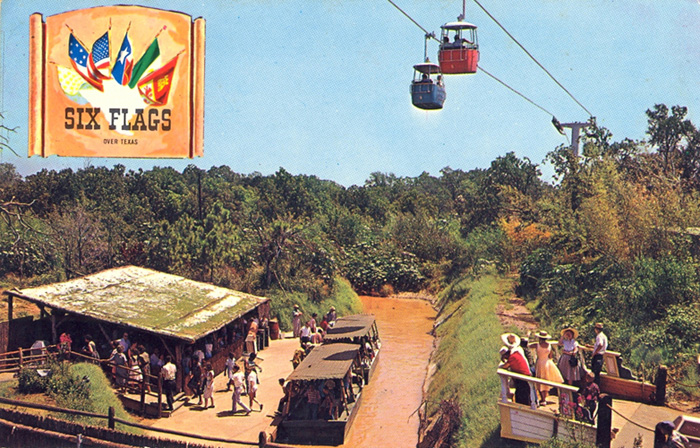
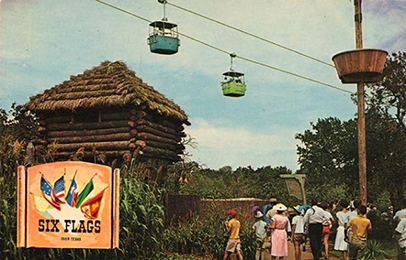


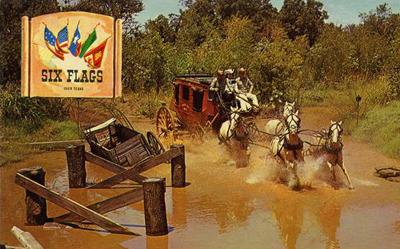

"Let me point out some of the sights" and other stories from summers at Six Flags
![]()
Sketches for park and ride design
Design proposal 2024
Over several decades:
1. The theming of the park had become diluted or eliminated. Originally, there were six distinct lands based on the flags that have flown over Texas, each with detailed, authentic, and appropriate environments. The park had become more of a carnival-like Amusement Park than a Theme Park.
2. The original names of the areas had changed. The Confederate reference had to go, the France section was obliterated once its only ride was deleted, USA/Modern/Contemporary names never quite worked, and new sections with their new names were added - each had no connection to Texas or Texas history. Improved theming can enhance new section distinctions, each with their own brands.
Proposed areas
• Seaside: All new land. Former: previously the entry drive, the Scream roller coaster, and the pond. Theme: Victorian Galveston, fishing lakes, Boardwalk. Music: seagulls, surf.
• Gotham: Former Good Times Square and Gotham City. Theme: big city, buildings, manhole covers. Music: horn honks, train going by, sirens.
• Boomtown: Former: Tower and Boomtown from Mine train to the Oil Derrick tower. Theme: Texas oil towns, derrick farm, East Texas pines, Gulf palms. Music: derrick noises, voices of miners and roustabouts.
• Depot Junction: Former Texas, all
• Playground:: Former Modern/Contemporary. Theme: Dog Park petting zoo, baseball diamond, Music: kids playing, baseball sounds.
• Fiesta: Former Mexico and Spain. Theme: Hispanic celebrations, Day of the Dead, Christmas. Music: Mariachi music, kid's voices.

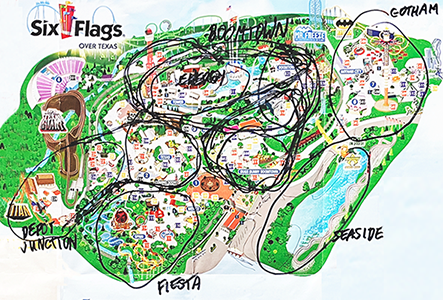
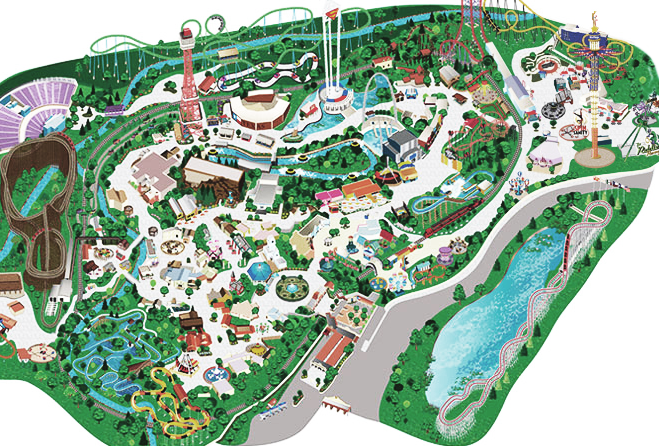
Above: Existing park entry drive and pond. Below: The new park expansion, addition of a dedicated shuttle/rideshare drop-off and pick-up, and new entrance from Ballpark Way to the parking lots (not shown - out of image.)

![]()
Design sketches 1966-69
I worked in the park for 4 summers. Often, after my day shift ended, I would wander the park and think about how to improve the experience - traffic flow, locations of buildings, new rides, signage, and anything else I saw and imagined that could be done better. At home, I would sketch some of the ideas on a large map of the park. I painted out the areas to be redone and drew in the new attractions to mimic the style used on the original map.
Improvements
• Better traffic flow
• New entry
• Easier navigation with inner loop and spokes from central hub
• New rides

My first park layout map. Instead of the entryway providing only 2 options - left to Mexico and right to USA - this concept had a central plaza of flags and fountains from which each of the 6 lands radiated out. This provided a better way to orient oneself and see the various themed lands. New rides: a dark ride in the upper right and a roller coaster in the upper left.
Below: This version had moving sidewalks carrying guests from the entrance to the central plaza. There was a loop walk that connected the lands and allowed the guest to go to a new area without having to go back to the plaza.



Left: Existing. Green = performance spaces. Right and below: A hub and a simpler layout of walkways.
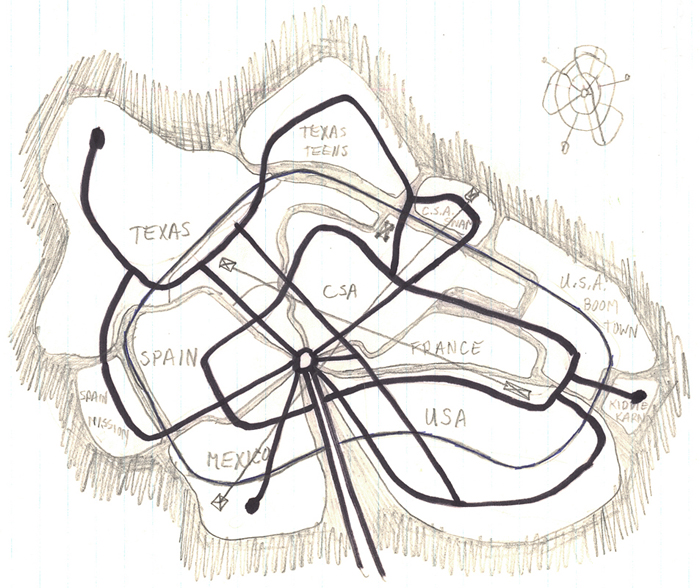
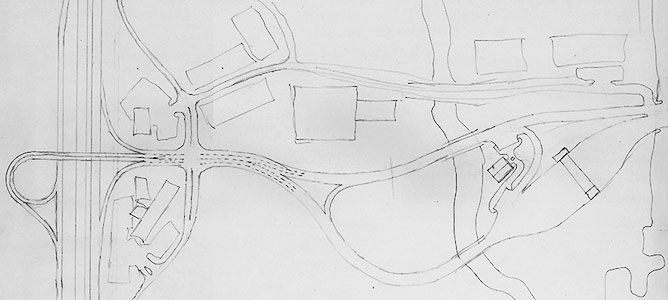
A new vehicle entrance from the midway rest area on the turnpike. This plan brings the cars into the back of the lot through a grove of large trees and over a creek. The more natural surroundings provided a transition from the chaos of the city and the turnpike to a more tranquil, exotic escape; thereby setting the mood for a day in the park. Guests still take trams to the park entrance. The access in and out is improved with a much shorter and easier route to the turnpike.
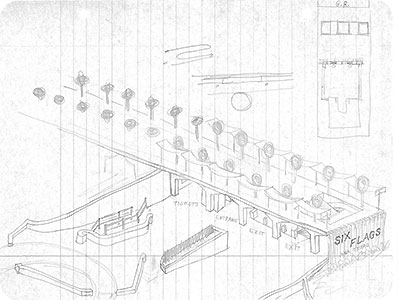
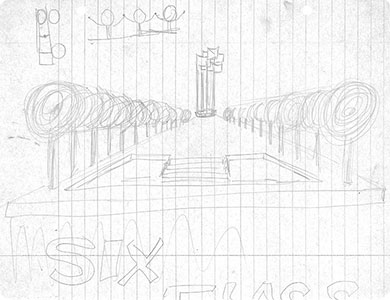
A new entry walk with ticket booths underneath and a view towards the flags and fountain in the plaza. The sign letters are mounted on thin rods that poke through the waterfall.
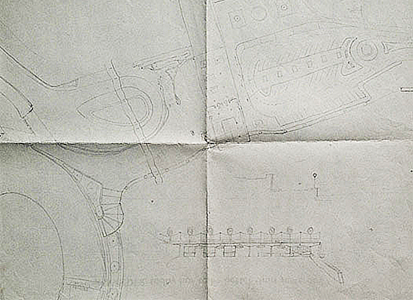
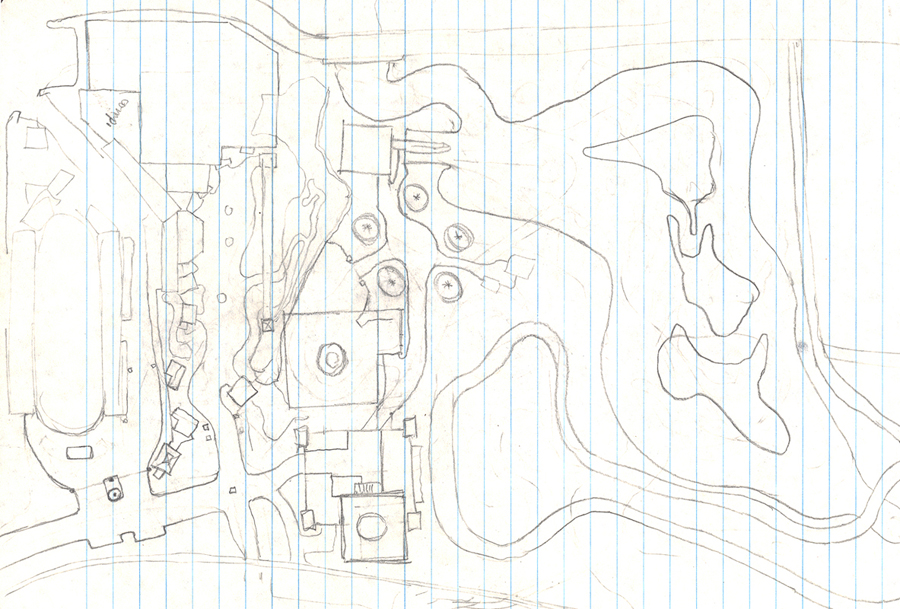
A map of the area outside the loop railroad to the west. There is a Wild West show arena on the left, an Indian village, canoe ride, and a stagecoach ride.

Above and below: An area patterned after East Texas towns.
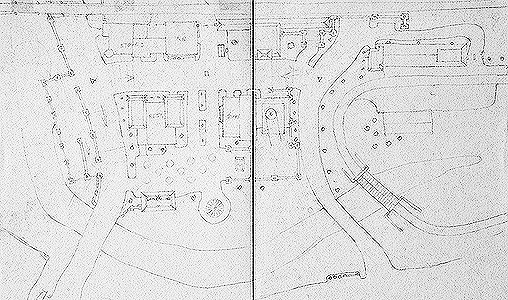
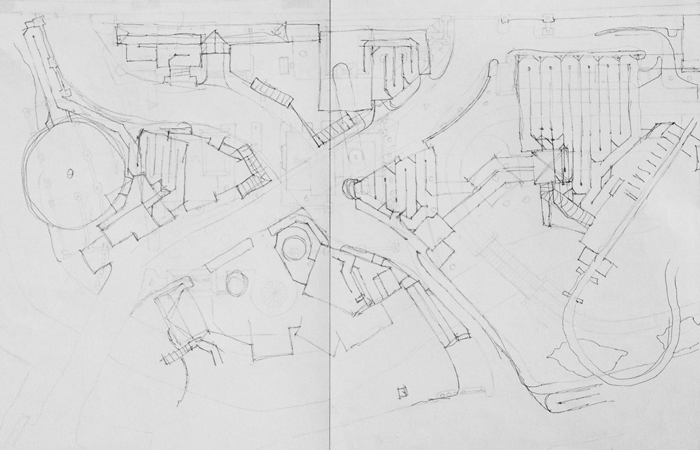

A redesign of BoomTown with an indoor attraction inside a mountain.
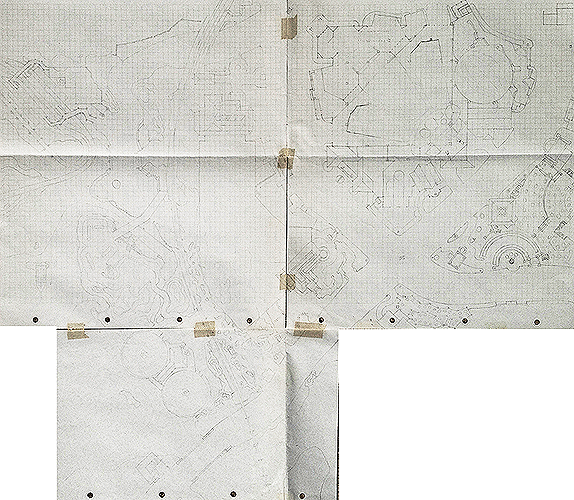
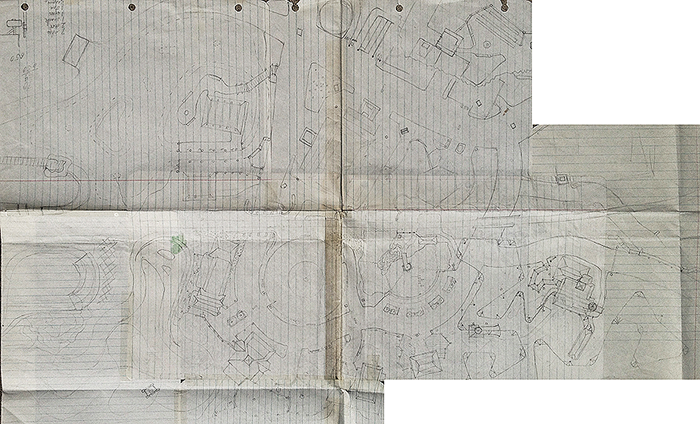
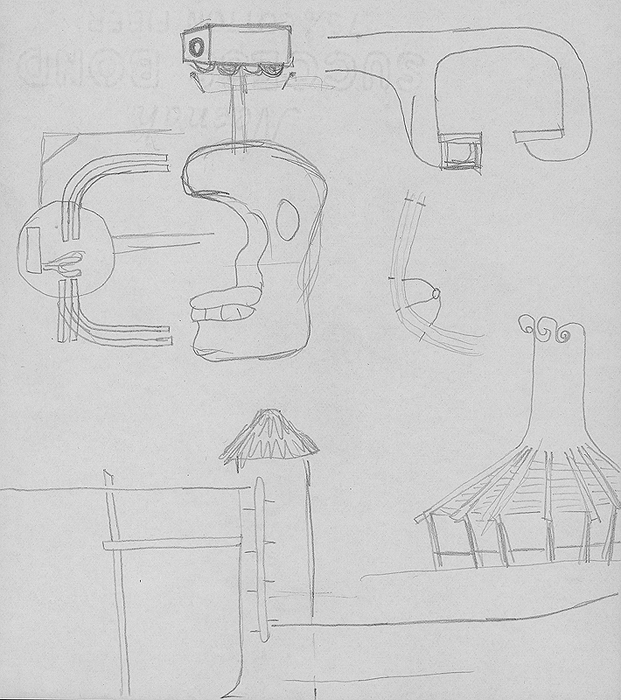

A ride inspired by Skull Rock on Skull Island where the cars are suspended from a cable high up in the trees. Shown in the lower right of the map above the sketches. The cars swing out as they go around the curves
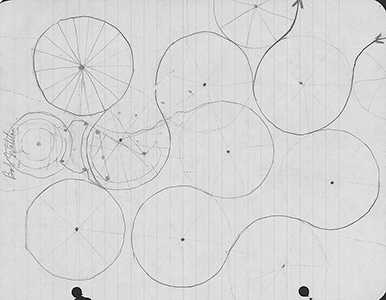
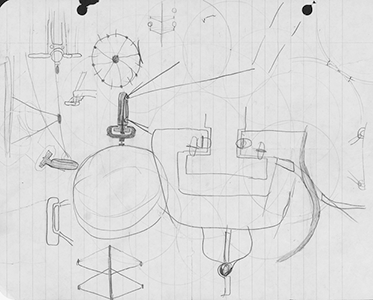



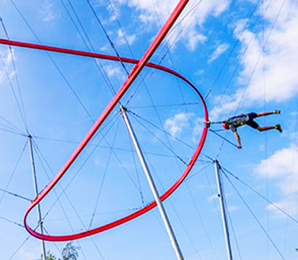
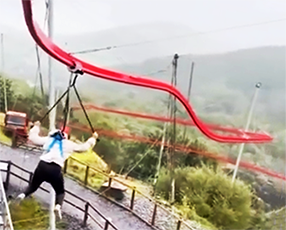
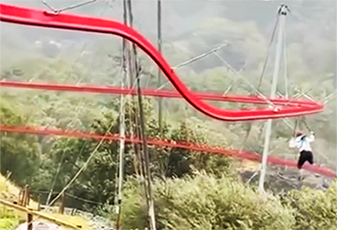



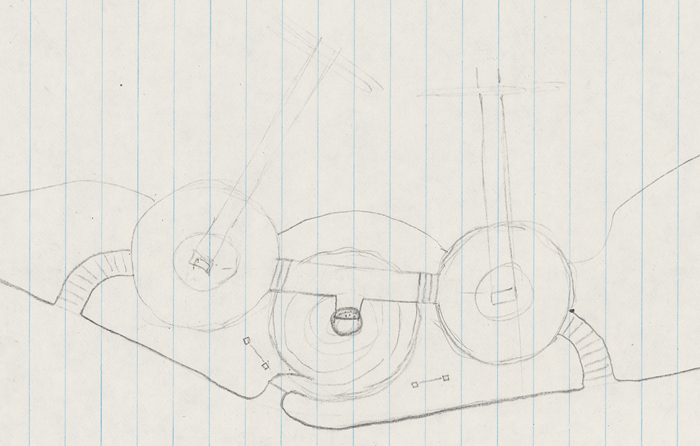
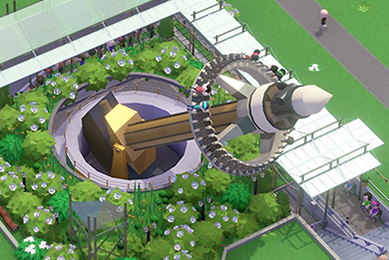
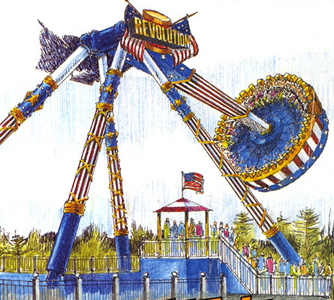


An indoor dark ride in which guests sit inside capsule shapes and travel through time, seeing the history of mankind through the ages and on into the future.
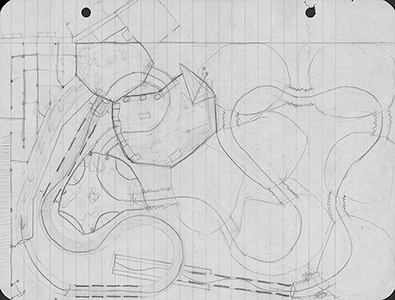

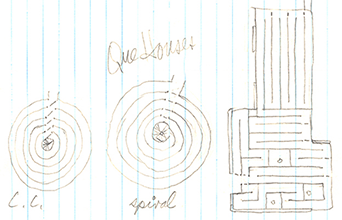

![]()
Other amusement park sketches
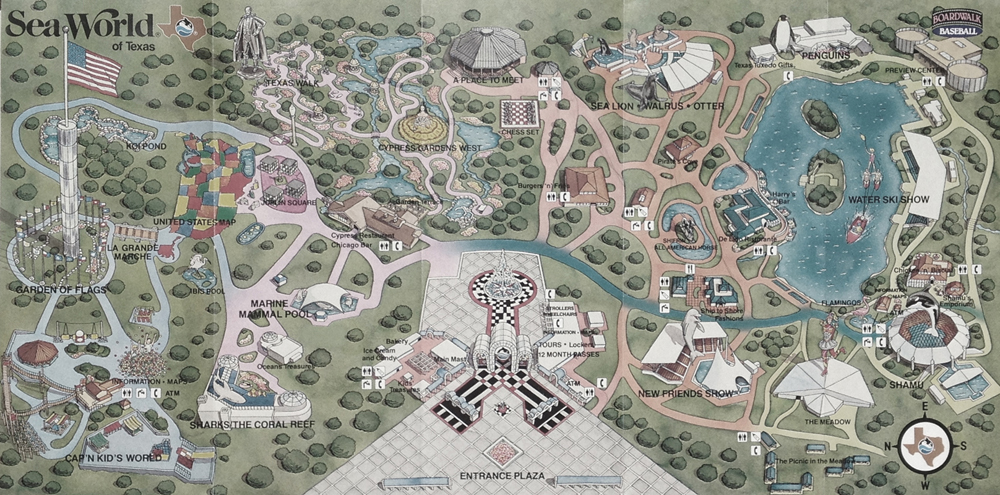
Sea World had a confusing maze of numerous walkways. The revision below shows fewer paths, but wider and easier to navigate.

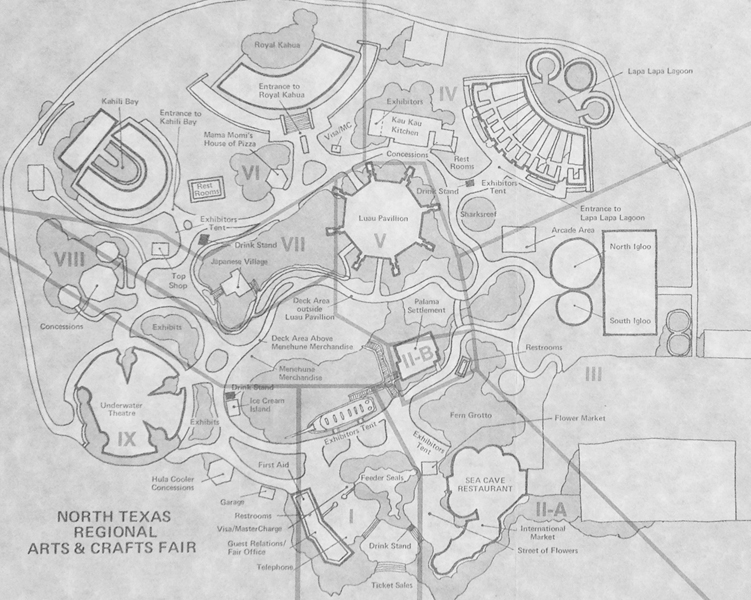
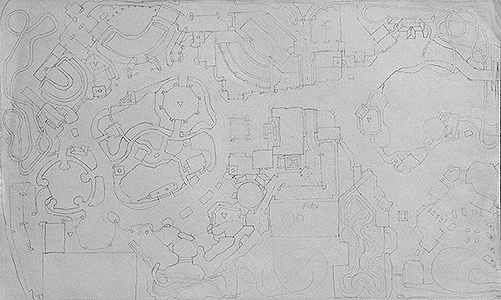
Above: redesign of the former Seven Seas park into a compact 'urban' theme park.
Below: Some other park plan sketch:

![]()
An article I wrote for the 1970 Employee Newspaper

Never to be finished . . .
Yearly Increase in Rides, Attraction Continues
In the time most of us have doubled our age, SIX FLAGS Over Texas has more than doubled its number of rides and attractions. The history of SIX FLAGS is comparable to the history of the State which is typified in the Park.
The idea for SIX FLAGS was conceived by Angus G. Wynne, Jr., then President of Great Southwest Corporation, and now Chairman of the Board. He and his associates had purchased 5,000 acres of prime land in Arlington/Grand Prairie between Dallas and Fort Worth and began planning for a family-type entertainment center to go along with his program for a huge industrial/recreational community.
Plans were based on the principle that the entertainment center would have a unique wholesome atmosphere, be kept impeccably clean at all times, and staffed with clean-cut, well-trained college students.
Beginning in September of 1960 with groundbreaking ceremonies, over 400 construction workers with special talents turned a sloping tree-studded area into into 106 acres of outstanding beauty. Utilizing the existing vegetation and more than 1,000 trees on the site, architects and engineers laid out SIX FLAGS Over Texas so that the beauty of the site would be preserved in as much of its natural state as possible.
Before a spade of earth was turned, however, a year of study, planning, and research was concluded. Great Southwest Corporation, using its own construction division under the direction of Luther D. Clark, now President of Six Flags, Inc., completed the tremendous task in slightly over 11 months.
SIX FLAGS opened to the public August 5, 1961.
There were many interesting and unique methods of design and planning that went into the construction of SIX FLAGS Over Texas.
First, Great Southwest Corporation purchased an operational, well equipped wood mill from New York and had it shipped 'en masse' down to a site in the Great Southwest Industrial District, wherein the Park is located. The wood mill, using an ingenious method of fabrication, played a major role in the building of SIX FLAGS.
A team of artists and architects drew sketches of the shops and building to be developed for the various sections of the historical-theme Park. These sketches were then redrawn on huge pieces of cardboard that were the exact sizes of the facades of the buildings to be constructed. Carpenters at the wood mill cut the lumber to conform to the life-size drawings on the cardboard. When completed in prefabricated sections, these buildings were transported to their own designated sections of the Park, resulting in the creation of entire towns.
The first name chosen for the Park was Great Southwestland. A few months prior to its completion, the name "Texas Under Six Flags" was substituted for Great Southwestland. That is, until Charles R. Meeker, Jr., the former Dallas State Fair Musicals producer and director of the early Six Flags musical campus revues, objected. "Texas ain't under nuthin!" he exclaimed to Mr. Wynne. Hence, the change of the title to "Six Flags Over Texas."
The statement was also made that SIX FLAGS would never be finished; it would continue to grow more and more each year. SIX FLAGS proved such a success in its first year with 564,000 visitors, that engineers were already working on improvements for the 1962 season. Some of these included moving the Sidewinder to Mexico where the Sombrero is located now. Another Happy Motoring freeway was added and the Chaparral antique cars were introduced in the Texas section. An extension of Skull Island was built and entitled Pirate's Island. The Canoes and Casa Magnetica were also built this year.
1963 was a major year in the history of the Park. Both the Log Ride and Boom Town were added that year. Boom Town consisted of the Sky Hook, a second Train Depot, Dry Hole Charlie's Cafe, the Carousel, and hat and souvenir stands.
The next year construction slowed down slightly as only minor additions were made. Three new swamp slides were added, the canoes were moved to Boom Town, and several new animations were put to life on the Stagecoach and Riverboat rides. Work had begun on a new type of ride which proved to be very popular when it opened in 1965. That was the Speelunkers Cave, the only ride of its kind at the time. The Shooting Gallery was also built that year and El Sombrero replaced the Sidewinder in Mexico. The SIX FLAGS circus performed in a new arena outside the Texas section. It was to be replaced, however, by the Wild West Show in 1966.
Also in 1966 the Amphitheater was covered and air conditioned. The ice house in the security compound became a landmark that year. At the end of that season and formally in the 1967 season, the Runaway Mine Train became one of the major rides in the Park. 1967 also saw the addition of the Jet Set and Snack Stand and the closing of the Stagecoach. A small ride known as the Spindletop was opened on a hill next to the old personnel office where the puppet theater stands now.
A major year for improvements was 1968. Because of increasing popularity, a second Log Flume was added, a completely new Fiesta Train was introduced and the Cyclorama of the American West replaced the Indian Village behind the Indian Souvenir Shop. The Spindletop was moved to Pirate's Island and two new theaters were built. The Southern Palace took the place of the Amphitheater while the Puppet Theater housed Sid and Marty Krofft's new puppet show.
The major addition for 1969 was the Oil Derrick and the Derrick Slide. They were located on the old Stagecoach route and Pirate's Island. A new area behind the Cave was added which included the Chevy Show, the Blowout, and a Sea Food Restaurant. The Sky Hook was moved to Six Flags Over Georgia, and the Mini-Mine Train was built in its place.
This year the Los Voladores Pavilion took the place of the Wild West Show. The flyers, who are Totonaca Indians, follow traditions which date back over 400 years. Their flight from the top of a 100-foot pole is based on a pre-Columbian rite designed to bring the attention of the rain gods. No nets or other modern safety devices are used.
The next major added this year was the Spectrum. A revised Blowout, it was moved from its former location and renamed. Plans are in motion to start a chain of such mod shops throughout Texas. As a replacement, Hilarious Harry's Gag Shop was introduced.
SIX FLAGS has never stopped growing - neither in size, now 145 acres, number of attractions, over 85, nor in attendance, exceeding 14,600,000 visitors. Angus Wynne's formula for success has indeed succeeded. The combination of a clean, attractive family entertainment center and a group of cheerful, respectful employees, has worked to make SIX FLAGS into Texas' most popular tourist attraction.
![]()
The spiel recited on LaSalle's Riverboat ride (unedited 1978 version, author unknown)
"One of these lovely French mistresses will help you off the boat."
Good Day my friends, this is your captain speaking and I'd like to welcome you all aboard my French Riverboat. Before we leave the dock may I ask you all to please keep your hands and arms inside the boat, since you never know when you might need them to swim back to shore should the boat sink, or the captain abandon ship. The brave at heart aboard this ship are volunteers for a very dangerous mission as we'll be traveling along waters much like the rivers the French Explorer LaSalle travelled on in his search for the mouth of the Mississippi. In addition to the Spanish, who had laid claim to Texas when LaSalle first left a colony at Matagorda Bay, we will also encounter both friendly and no doubt many unfriendly indian tribes along our journey. And here is early proof of that, it would seem that the indians have already attacked this French encampment and that trapper has met with the same unfortunate end that many settlers met within this wild new land.
Perhaps the most formidable four legged enemies that early settlers faced in Texas were the gray wolves. Settlements or camps attacked by the indians are soon taken over by the wolves, who often scatter the bones up to a mile. Although not always as dangerous as Indians, the Spanish had already laid claim that the territory of Texas when LaSalle established his first colony, but the discovery of a French camp in Spanish territory did cause the Spanish to step up their mission programs. Mission San Francisco De Los Tejas was built in 1690 by Father Massonet with the help of friendly indians from the area.
Many such missions are protected by Spanish Forts such as the one up ahead. Since they fly the Spanish Flag and we're French, we must try to slip by unnoticed. Luckily there's no one in the watch tower so if you'll all be very quiet we'll try to make it by....But oh no! That Spanish soldier has spotted us...they've opened fire! Full speed ahead. Careful, a near miss on the port side, another near miss, prepare to abandon ship! Women and children first, after the captain of course. But wait! They've ceased fire, it would seem as though the Spanish can't hit the broad side of a little French Riverboat.
Over to my right you'll see something that's becoming very common along the Rivers in Texas. Trading Posts appear to be an excellent way to make friends with the indians.
Trading posts have also inspired many trappers to come to Texas. A trapper friend of mine, Francious knows this area well, and he's usually around here so keep an eye out for him. There he is now in the top of that tree...I'll ask him in French if its safe to go on...(away from mike) "Francious my friend, is it safe to go on?" Unfortunately he's shaking his head no, which in French means no - but, the river's too narrow to turn around right here, and besides, I'm not ready to risk another pass by those Spanish cannons. So we'll continue on for the glory of France. I believe Francious has a small camp along here, and perhaps we'll be able to stop for some good food and company.
But no, there will be no stopping here, the camp is under attack by indians and I'm afraid we're caught in the crossfire! Everybody quick, down in the boat - we'll duck now and ask questions later.
Those bullets are real my friends, have no doubt, real enough to ruin even those barrels of good French Wine. They really know how to hit a frenchman where it hurts, don't they? In the wine barrels!
Mon Amis we are now entering the most dangerous part of our journey, swamp lands, infested with huge hungry alligators. Let me once again remind you to keep your hands and arms inside the boat because these gaters just love to be hand fed, and once in the water, there's not a man alive that can out swim one of these monsters.
What!?! No need for alarm, its just a bear fishing for some dinner in the river, we probably disturbed him. Quick Look! There's something moving in the bushes (pointing to port side) I'm sure I saw something move up there....Look Out! Its an indian war canoe, everybody duck down! Those arrows are tipped with poison, one scratch could mean instant death. Luckily they didn't shoot!
On my right you'll see what they were probably trying to protect an indian burial ground. As you can see indian customs require that they bury their dead 6 feet above the ground. Burial grounds are sacred, and trespassers are dealt with severely. Some tribes even sacrifice a dog, horse, or even a woman with a dead warrior.
With a burial ground here a village can't be far, so we will try to proceed quietly and carefully along.
And just as I thought, here is the Indian village. That medicine man is really a priest for the tribe, and there's no tellings what that dance he's doing is supposed to do; I just hope it's not going to do it to us!
Luckily, I don't see any warriors around, just young braves and squaws tanning hides and preparing some of their favorite dishes, perhaps boiled earth worms and raw fish.
Quiet everyone, over on the shore is a black bear. I hear that many settlers along the river call the black bear the clown of the woods, but considering his tone of voice right now, I'd say those sounds were more like hunger pains than jokes.
Traveling along the river can be very dangerous, but traveling the shore is next to impossible because of the thick brush and the many wild animals along the shore.
Here you can see a single bear fighting for his life against some very dangerous enemies. The wolves are very careful though because that bear's teeth are very sharp, not to mention the power in his "bear" hands.
Quick everyone, lean to the port side of the boat; for over on the starboard is a whirlpool. That poor soul is already on his way to a watery grave, but you've got to give him credit, he did save that piece of drowning wood.
To the left a pack of beavers, an important source of income to many trappers and a source of trouble to many captains as they often pose a menace to navigation. Look Out! Timber... Well, it that tree had been a little longer this boat and this trip would have been alot shorter.
I hope you are all brave for ahead lies unchartered waters and there is no way of telling just what might be waiting for us.
Look... Indians! On both sides of the shore, everyone bravely and quickly duck! I'd say those Indians have only one goal, to get a head. So it's full speed ahead for us. But wait! A waterfall with a solid rock wall behind it. I'm afraid our journey has come to an end if you'll all prepare to abandon ship on the count of three, One... Two... WAIT! The waterfall has parted, the rock wall is opening. I believe we've stumbled on an ancient Indian treasure cave. Many explorers gave their lives in search of caves such as this containing Indian gold and treasure.
Perhaps we should reconsider and turn back, but I'm afraid we can't! The doors have closed and we're trapped inside. Look, to the right, treasure! But don't take any, it's being guarded by that skeleton. Oh no! more trouble, a rock wall ahead... but no, I see light, the wall is swinging open. The Indians have rewarded us with our lives for not stealing their treasure.
And there is the flag of France flying proudly above Ft. St. Louis. Viva la France, we've made it back to safety!
I want to thank you all for being such a brave crew and accompanying your not-so-brave captain on this very dangerous journey. I hope you enjoy the rest of your stay at Six Flags Over Texas and come back and see us again real soon.
Now as we approach the dock, please keep your hands and arms inside the boat, wait till we come to a complete safe stop, then exit on the dock side only. You'll find it a little drier there.
On the dock we should find a beautiful glamorous French sailor girl (or handsome, debonaire, exciting French sailor) to help you out of the boat. But as you can see she (or he) didn't show up ... so (name of host or hostess) will have to do.
Now mates and mateys, the time has come to say merci beau coup and au re voir: which is Texas French for thank you very much... and abandon ship before she sinks.
www.jamesrobertwatson.com/sixflags.html
![]()
![]()
![]()
![]()